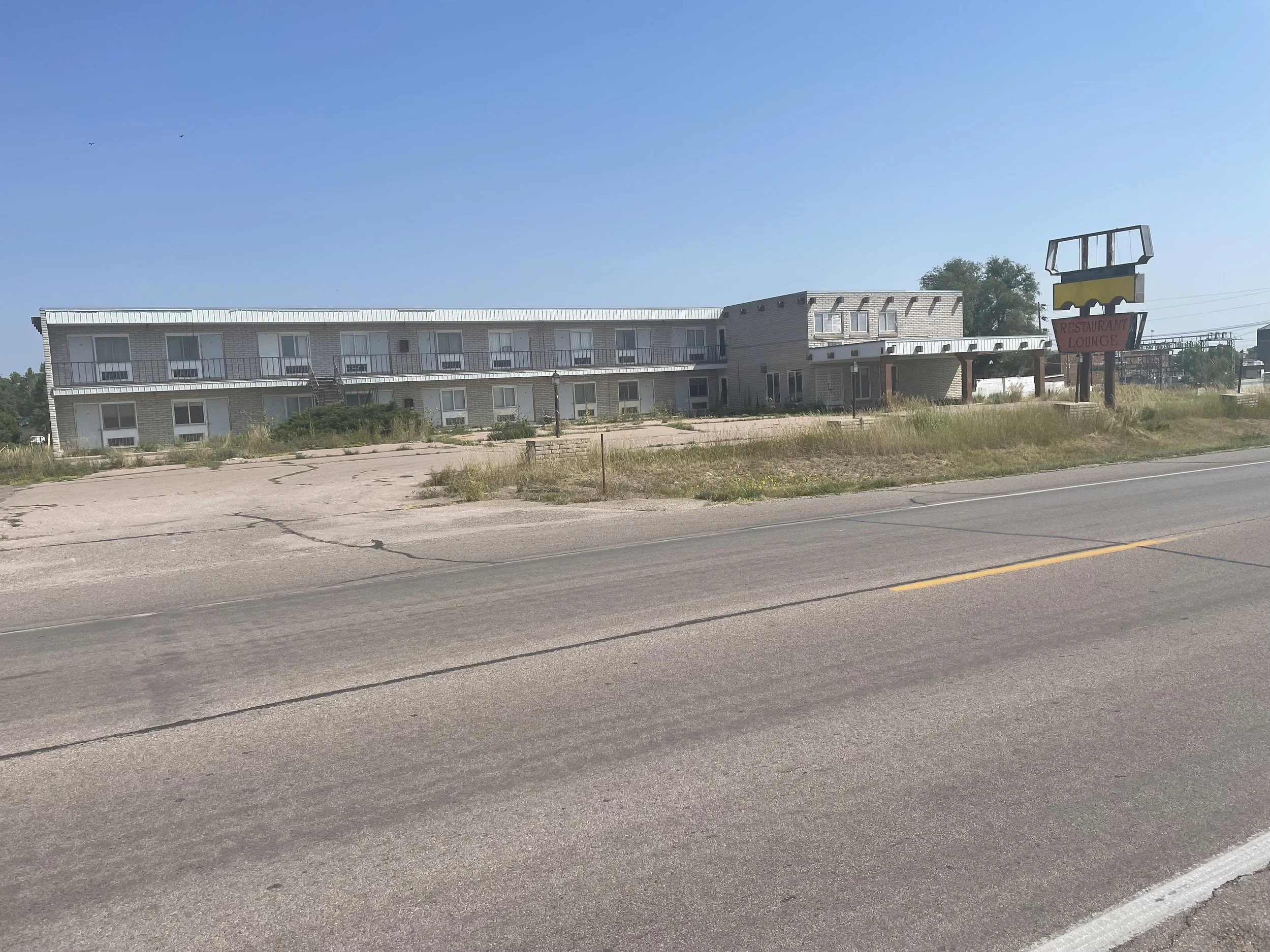The American Dream
“That’s why they call it the American Dream – because you have to be asleep to believe it.”
- George Carlin
I didn’t set out on my cross-country trip to study the United States, but I am a curious person by nature and, as I wrote last week, eager to examine and appreciate what I saw. Personally, the trek was a way for me to shake things up after 23 years in the corporate world and use the opportunity to reflect on the choices I made in my life and how I could make changes. Parallelly, throughout my journey, and especially after my return home, I began to peek under the shiny veneer of America and peer into its dark cellar.
I don’t have to travel far to see the disparity of wealth in my adopted home of Columbus. But living in one place, I think, has desensitized me. The economic gap is like the blurry background in my field of vision – always there, yet out of focus while my attention stays fixed on the foreground tasks before me. But the “time out of time” nature of a bike trek and crossing the country at 15 mph allowed the breadth of this wealth gap to come into focus, unsettlingly. At the front end of the trek I passed through ultra-wealthy urban Seattle and its suburbs and the homes to the jet-setting movers and shakers who own property in “rural” Sun Valley, Idaho and Jackson Hole, Wyoming. These places stood in sharp contrast to the small economically fragile towns in Wyoming, Nebraska, Iowa, and Illinois leading to the fading rust-belt communities in Ohio, West Virginia, and Pennsylvania I saw in the middle and latter stages of my ride.
Flower-festooned house in trendy upscale Alki Beach, Seattle.
The American Dream is Born
Observing this incongruence on such a large scale was jarring and in my examination I could not help but think of the American Dream – a metaphor that looms large in our national consciousness. The phrase was popularized during the Great Depression by writer and historian James Truslow Adams in his book The Epic of America (1931). It was initially expressed as a national ethos – that every person has the freedom and opportunity to succeed and attain a better life. Over time it has become synonymous with upward mobility and the acquisition of material wealth (by owning a home, for example). As a foundational narrative, many Americans both desire and expect its realization.
If upward mobility now plays a central role in the American Dream, I believe it is partly responsible for the hyper-individualistic nature of our society. It used to be that most Americans were content to earn a fair share of the pie. Nowadays, aided and abetted by a sophisticated flood of overt and covert consumerist messages, the national discourse leans heavily towards not just maximizing the size of the proverbial pastry piece, but that it’s perfectly legitimate to douse it with a gluttonous helping of whipped cream. As I surveyed from my perch on the bike, some communities looked like generous portions of pie a-la-mode while so many others looked like stale crackers topped with day-old margarine. Our culture of hyper-individualism, without the countervailing efforts to mitigate the excesses of competitive greed, leaves too many of our fellow citizens chewing on those dry wafers.
Much like the mythologization of rural America I discussed in the last post, the American Dream has also been mythologized to the point where it has become the dominant story we tell ourselves about opportunity, success, and self-determination. Its mythical status means we accept it without critical thought, like religious dogma. It is the collective jug of Kool-Aid from which we all drink.
I think the American Dream nowadays is not just a guiding belief but is also interpreted unconsciously as a promise. For those born with the means, that promise is usually realized (though easily squandered). For those without the means, the promise of the American Dream appears as a mirage, often created by the smoke and mirrors of charlatans and marketers, an age-old tradition in this country.
In the nineteenth century, homesteaders were lured west by land speculators and railroad companies using the now-discredited promise that the dry plains would yield crops and earn a good living because “rain follows the plow.” The promise of home ownership on the cheap through sub-prime loans is a more recent example of tainted claims, this time by the financial industry, a different sort of speculator. Caveat emptor should be the watchword of our economic faith.
Ultimately, I concluded that the American Dream shares the same voluntary act or “unspoken contract” agreed to by readers and viewers of Science Fiction and Fantasy. In these genres, we willingly suspend our disbelief in fabrications such as faster-than-light travel or talking trees to help make sense of a story and its fictitious devices (though it still bothers me that small spacecraft in the Star Wars franchise are able to cross vast galactic distances in just about the same amount time that it takes me or you to pop over to the grocery store).
Much like in a science fiction story, to believe in the American Dream is to suspend our critical thinking so that the narrative of America as it’s been presented to us is preserved. For example, we accept as hard truth that our democratic rights and freedoms combined with an individual’s hard work in an economy that has few barriers leads to prosperity and upward social mobility. Yet in a country with ever-widening gaps in wealth, this narrative is patently false for the 60-70 percent of the population who live paycheck to paycheck.
Boarded up motel in Gordon, Nebraska.
Waking Up From the American Dream?
I see a gap (chasm, really) between the promise of the American Dream and the reality of living in a country where your economic opportunities, by and large, are determined by the financial circumstances you’re born into. The disparity between holding on to an unconscious expectation of realizing the American Dream and the constraints of one’s economic reality has led to no small amount of bitterness and frustration. The fact that more people report that the American Dream is no longer in reach reveals cracks in the façade of this narrative (per one ABC News/Ipsos poll, the percentage of Americans who say the American Dream is still in reach dropped by almost half between 2010 and 2024). These raw feelings are the dry tinder our President first douses with gasoline and then sets afire with the flick of a lit match. (We all know the Prevaricator-in-Chief to be a liar and a bully. Who knew he was also an arsonist?)
If Americans who have been left behind by an economy increasingly shaped by the Captains of Finance and their Tech Bros brethren are indeed waking up from the American Dream, let’s hope that it’s the kind of awakening like when you’re slapped in the face by a cold breeze – bracing, but leaving you clearheaded. I am concerned, however, that this act of waking up is of the irrational variety, like when an overdosing opioid addict has a rapid reversal after getting a dose of Narcan and lashes out violently before they are fully conscious.
If the American Dream is now conflated with achieving material fulfilment as defined by the marketers who can now reach us 24/7 thanks to the devices we carry in our pocketbooks and pants’ pockets, the question I ask myself is, “How much is enough?” I too am guilty of enjoying the pleasurable hormonal rush of purchasing a long sought-after product. Yet, the Kool-Aid is addictive and leaves everyone thirsting for more. As much as we down the sweet, corn syrupy nectar, it does not sate us. A growling stomach does not a happy body make.

